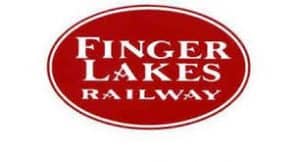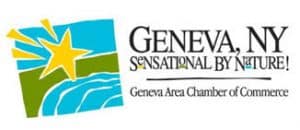Symbols New and Old in Use in Geneva and Elsewhere
By Karen Osburn, Archivist
I came upon an article on symbols of the Egyptian afterlife not long ago. It started me thinking of all the symbols we use regularly or used to use regularly not so very long ago.
 Think about it for a moment, what symbols did we often see 20, 30 or 50 years ago that we no longer see? How about the cent “¢” sign; or some logos, advertising signs or slogans? “Bucky Beaver” for Ipana tooth powder, the tiger from the “put a tiger in your tank” ad campaign for Esso gasoline, Mobile Oil had Pegasus or the dinosaur from the Sinclair oil sign for example. Think about the logos or symbols for car makers like Pontiac, Oldsmobile, Studebaker, and Edsel. How about the symbols that organizations have or had, such as the Masons, the Odd Fellows, the Moose Club, and Rotary; then there are images and phrases used by businesses and non-profits which might give you an idea of what their mission is.
Think about it for a moment, what symbols did we often see 20, 30 or 50 years ago that we no longer see? How about the cent “¢” sign; or some logos, advertising signs or slogans? “Bucky Beaver” for Ipana tooth powder, the tiger from the “put a tiger in your tank” ad campaign for Esso gasoline, Mobile Oil had Pegasus or the dinosaur from the Sinclair oil sign for example. Think about the logos or symbols for car makers like Pontiac, Oldsmobile, Studebaker, and Edsel. How about the symbols that organizations have or had, such as the Masons, the Odd Fellows, the Moose Club, and Rotary; then there are images and phrases used by businesses and non-profits which might give you an idea of what their mission is.
So many people or businesses use symbols on a regular basis. Batman, Superman, the Flash, restrooms, and “chain restaurants” like Kentucky Fried Chicken have memorable logos as do Wegmans, Apple and Disney.
 Until I looked into the subject I did not know that there are basically 7 different types or styles of logos. They are the emblem logos, the wordmark logos, the mascot logos, the combination marks, the pictorial marks, the lettermarks and the abstract marks. Examples of each type are Apple’s pictorial mark, Google’s wordmark, Burger King’s combination mark, Kentucky Fried Chicken’s mascot logo, NASA’s lettermark style logo, Pepsi’s abstract mark logo and a city, college, or state “coat of arms” type emblem logo.
Until I looked into the subject I did not know that there are basically 7 different types or styles of logos. They are the emblem logos, the wordmark logos, the mascot logos, the combination marks, the pictorial marks, the lettermarks and the abstract marks. Examples of each type are Apple’s pictorial mark, Google’s wordmark, Burger King’s combination mark, Kentucky Fried Chicken’s mascot logo, NASA’s lettermark style logo, Pepsi’s abstract mark logo and a city, college, or state “coat of arms” type emblem logo.
The City of Geneva had a contest a few years back to come up with their new logo and catchy phrase “Uniquely Urban” showing against a city’s downtown and a lake with a sailboat. Initially there was some question about what “uniquely urban” meant, but the logo and phrase work together nicely with the Geneva Chamber of Commerce phrase “Sensational by Nature”.
 In the first half of the 20th century many businesses seem to have used a combination of logo styles with words and images. Considering the cost of printing and design during that time this makes sense. If a person were to look in the newspapers for ads you could see the designs appeared much simpler than many of the graphic designs today. The fact that most newspapers in the early 20th century were doing very little color printing also lent to the simplicity of advertisements.
In the first half of the 20th century many businesses seem to have used a combination of logo styles with words and images. Considering the cost of printing and design during that time this makes sense. If a person were to look in the newspapers for ads you could see the designs appeared much simpler than many of the graphic designs today. The fact that most newspapers in the early 20th century were doing very little color printing also lent to the simplicity of advertisements.
The most interesting part of this research was the number of products and businesses who are no longer operational and whose logos are all but forgotten. Many from my childhood are no longer a part of the business landscape even though I remember them as if they were here yesterday. It is fun to look at the old logos and ads with nostalgia for what they represented and when kept in context with the era they were used in they provide us with a window into local and national history.
